Question:
- Who is using BEAST?
- Who is using Genenious?
- Is there any relation among the research interests of people using BEAST to Geneious?
Answer:
We analysed authors’ profiles whose publications cited our papers to find out:
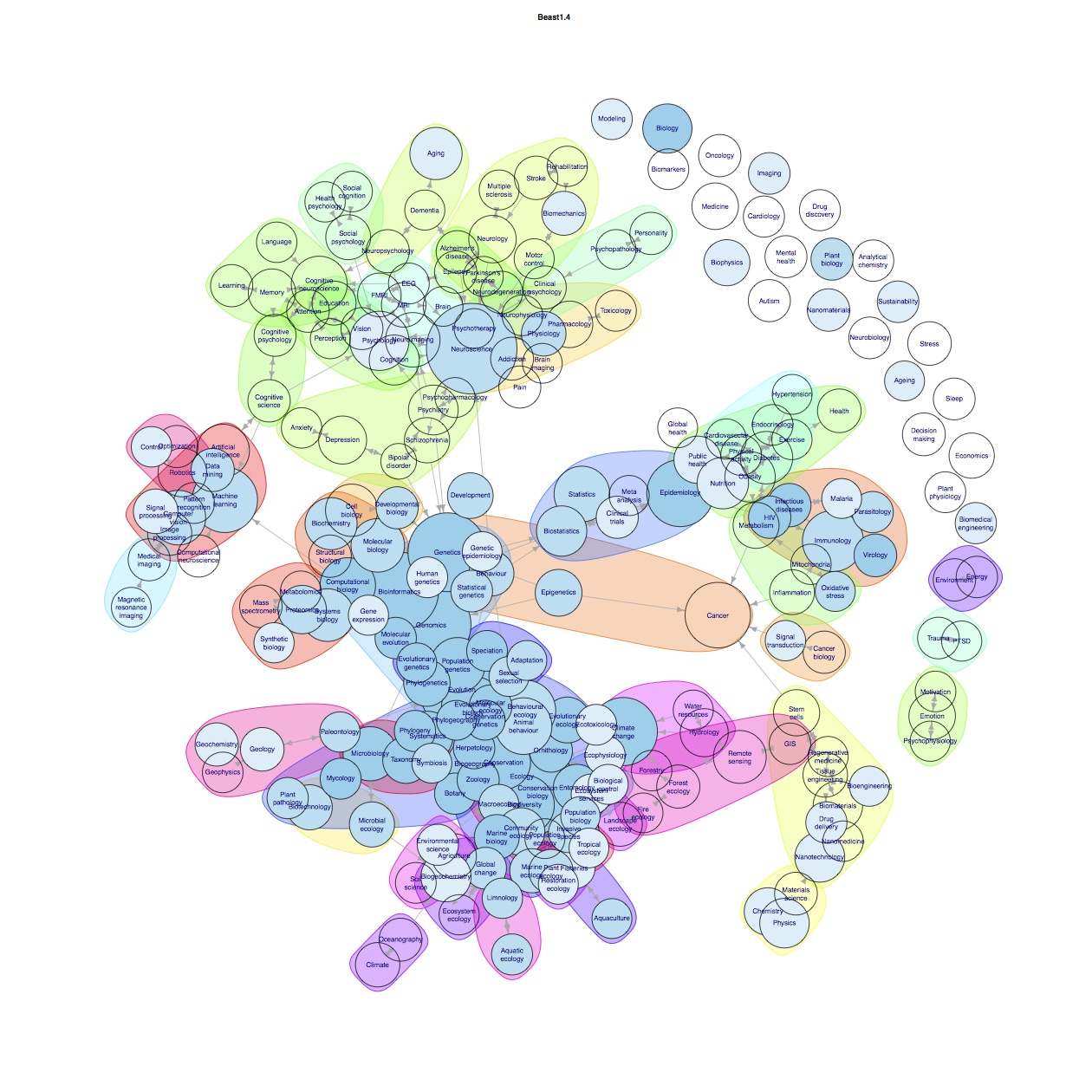
Click the figure to enlarge or download PDF
The network created by research terms starting from Genomics was used as the backbone of these figures. The meaning of its nodes and edges was same as Figure 1. They were dyed by only one colour in each figure, such as blue for BEAST, orange for Geneious. But the colour densities were discretized into three categories, and proportional to the number of Google scholar profiles using those terms, whose publications cited a given paper, such as BEAST 1.4 in Figure 1. Blue shows the number of profiles using that term is big, and light blue indicates small, but the transparent (please do not confuse with their clusters colours) stands for none.
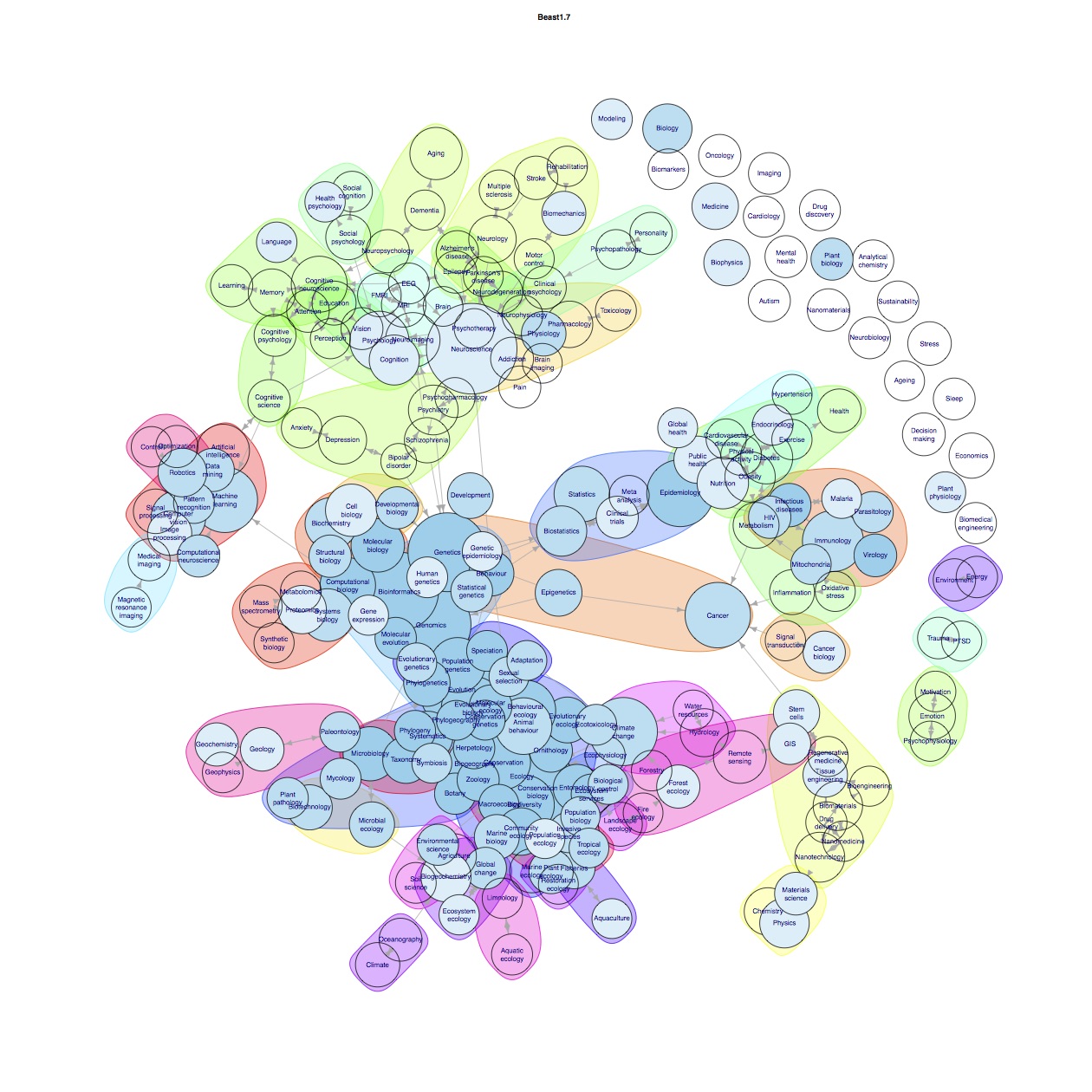
Click the figure to enlarge or download PDF
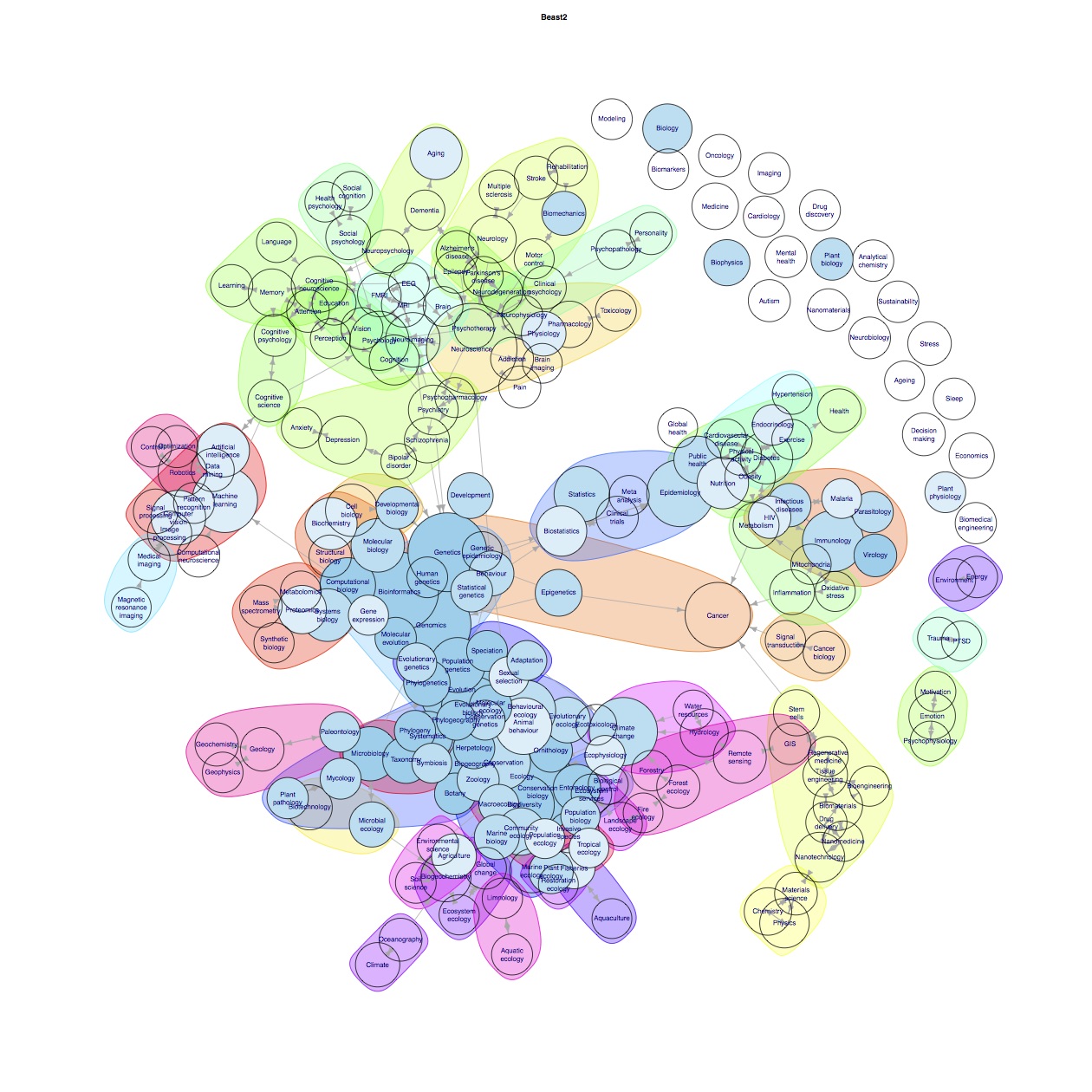
Click the figure to enlarge or download PDF
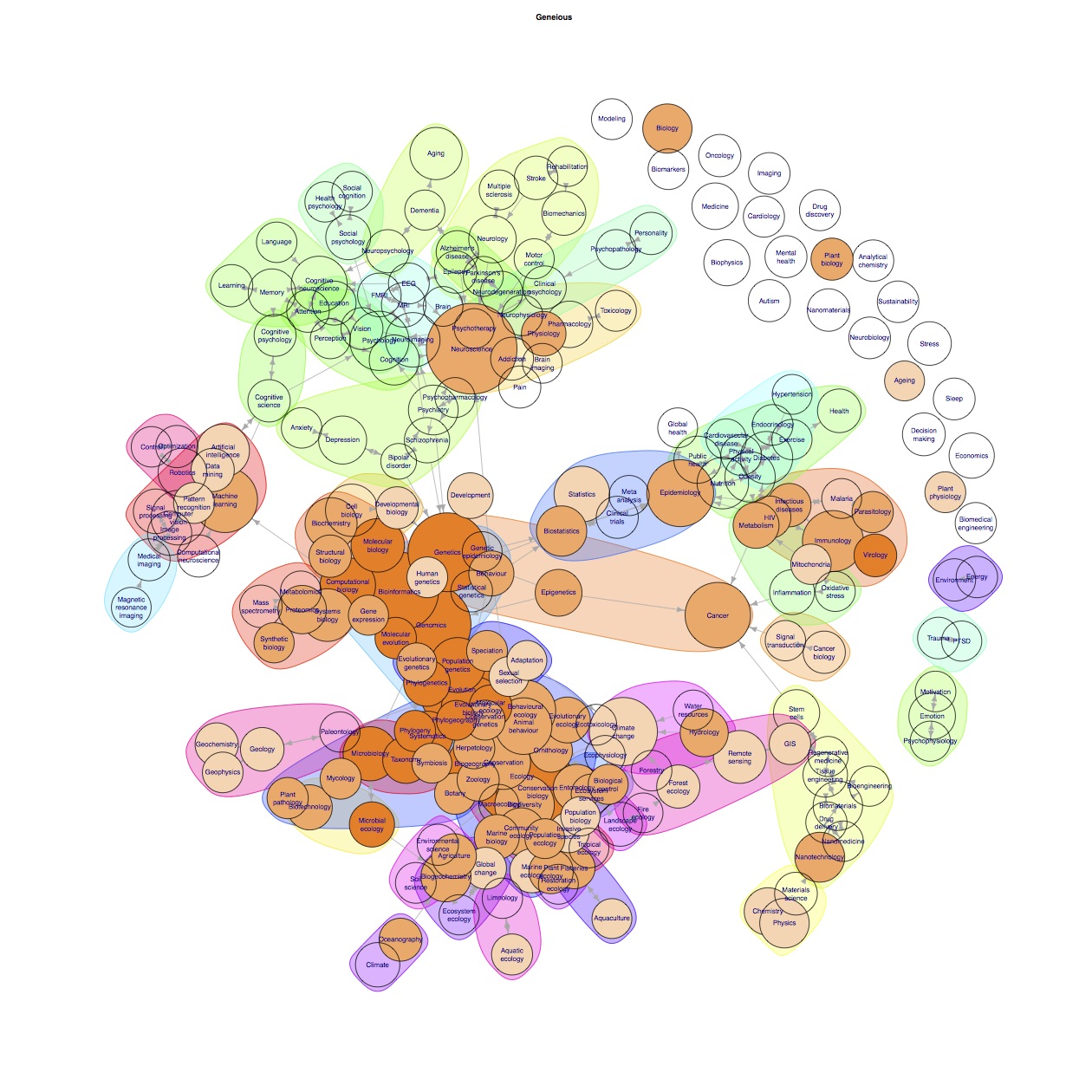
Click the figure to enlarge or download PDF
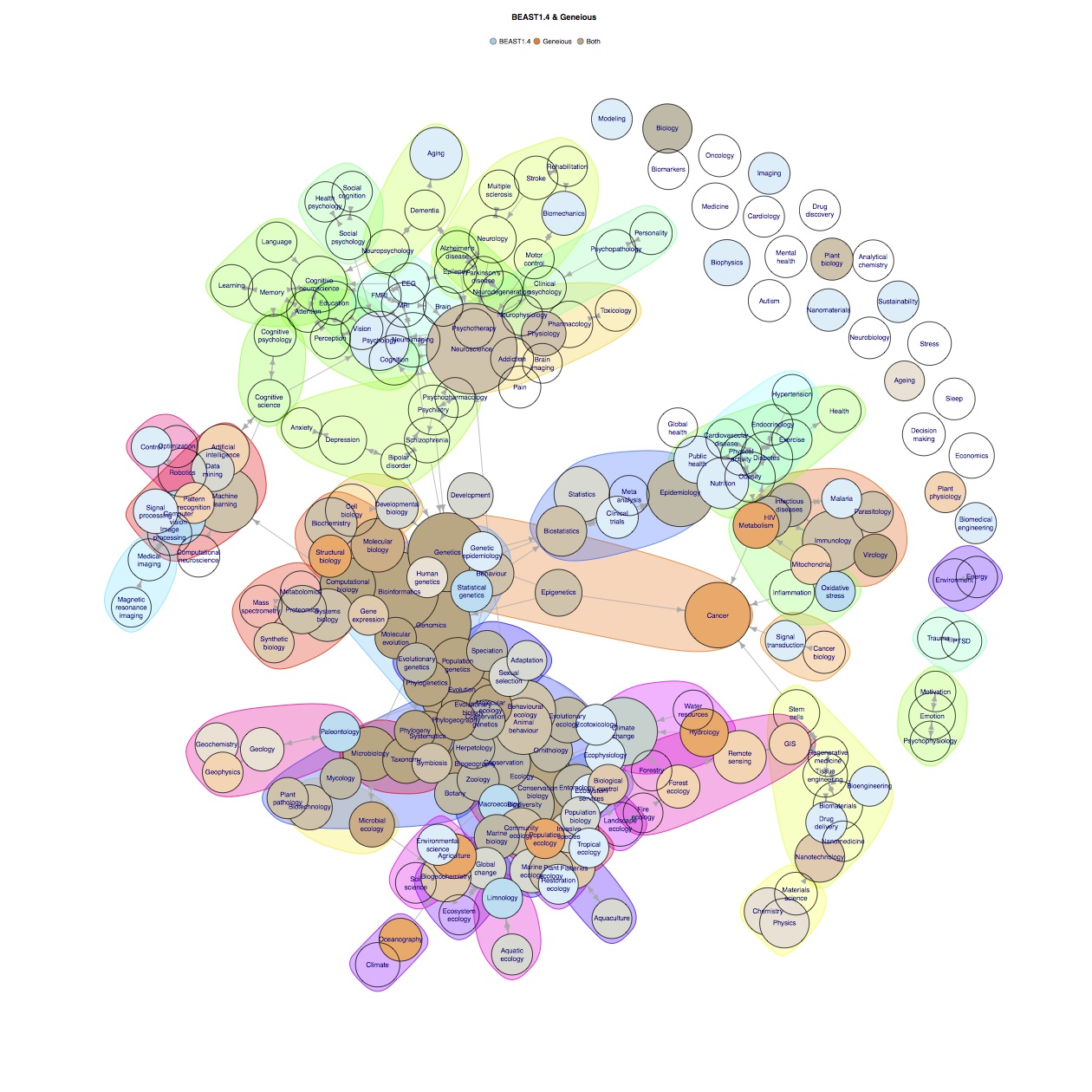
Click the figure to enlarge or download PDF
Three different colours are involved in Figure 5, blue represents the term was discovered on the authors’ profiles who only cited BEAST 1.4 but not Geneious, organe stands for only Geneious but not BEAST 1.4, and brown means both.
Data:
The publication data is compressed into gs-publications.zip.
The persons data is compressed into multiple parts gs-persons.zip and gs-persons.z*.
Few examples are introduced in the case study.
We recommend to use the command line, such as unzip gs-persons.zip, to uncompress zip files.
Citation:
Alexei Drummond and Dong Xie, Scholar Relational Network, https://github.com/alexeid/gscholar-networks.